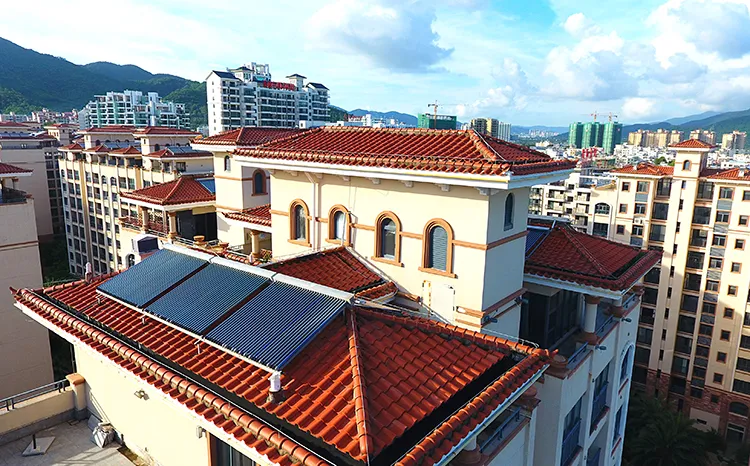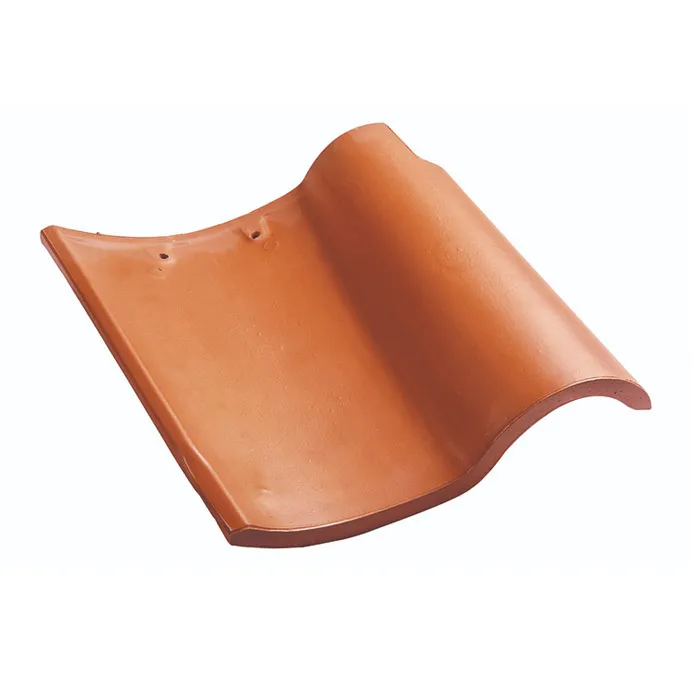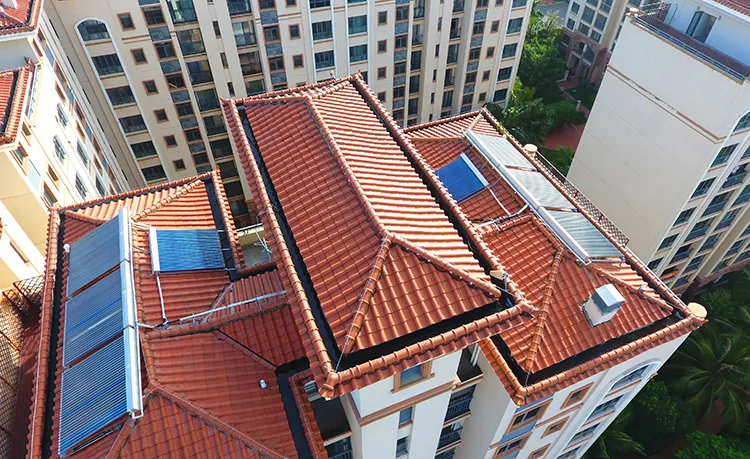Spain, as a country with a long history and rich cultural heritage, enjoys a high reputation worldwide for its architectural style. Walking on the streets of Spain, buildings with red tiles and white walls can be seen everywhere. These unique roof tiles are not only an important part of architectural aesthetics, but also play an important role in function.
So, what are the names of these classic Spanish roof tiles? What are their characteristics? This article will explore in detail the name, history, characteristics and application of Spanish roof tiles in modern architecture.

What is the name of Spanish roof tiles?
Spanish roof tiles are often called "Spanish Tile". This name is not only a simple description of its regional characteristics, but also a general term for the unique shape, material and production process of this tile. In Spanish, this tile is called "Teja", and one of the most representative shapes is "Teja Curva", also known as "Teja Árabe" or "Teja Canal".
History and Origin of Spanish Tile
1. Historical Origin:
The history of Spanish tiles can be traced back to the ancient Roman period. With the expansion of the Roman Empire, the Romans brought their construction technology to Spain. Among them, clay tiles became an important material for roof construction. This tradition continued and developed in Spain, gradually forming a unique Spanish tile style.
2. The influence of Islamic culture:
In the Middle Ages, Islamic culture had a profound impact on Spanish architectural style. Muslim Moors brought their unique architectural style and craftsmanship to the Iberian Peninsula, further enriching the types and styles of Spanish tiles. In particular, the "Teja Árabe", with its curved shape and smooth surface, is a manifestation of Islamic architectural style.
What are the characteristics of Spanish tiles?
1. Material:
Spanish tiles are traditionally made of clay. Clay tiles have good durability and thermal insulation properties, which are very suitable for the climatic conditions in Spain. In modern technology, tiles made of materials such as concrete, Spanish glazed tiles and metal have also appeared, but clay tiles are still the most classic and common choice.
2. Shape:
The biggest feature of Spanish tiles is their curved shape. The most common type is the "Teja Curva", which is a semi-cylindrical tile that can cover the roof well, form an interlocking structure, and effectively prevent rainwater from leaking. Another common type is the "Teja Plana", which is flat but slightly curved and also has good waterproof properties.
3. Color:
The color of Spanish tiles is usually red or orange, which is the color naturally formed by the clay during the high-temperature firing process. This color is not only beautiful, but also reflects sunlight well and keeps the roof cool. In modern technology, the colors of tiles have become more diverse, but red and orange are still the most representative colors.

What are the functions of Spanish tiles?
1. Waterproof and moisture-proof:
The design of Spanish tiles makes them waterproof. The curved tiles can form a tight cover to prevent rainwater from leaking and protect the structure and living space under the roof.
2. Heat insulation:
Clay tiles have good thermal insulation properties and can effectively block direct sunlight and keep the room cool. In winter, tiles can also provide a certain degree of insulation to improve living comfort.
3. Strong durability:
Spanish tiles are extremely durable and can withstand various climatic conditions, including strong sunlight, rainfall and storms. High-quality clay tiles can even be used for decades or even hundreds of years, and almost no replacement is required.
How are Spanish tiles used in modern buildings?
1. Residential buildings:
Spanish tiles are still widely used in residential buildings, especially in Mediterranean and Spanish-style villas. The combination of red tiles and white walls is not only beautiful, but also provides a good living environment.
2. Commercial buildings:
Spanish tiles are also widely used in some commercial buildings, such as hotels, resorts and restaurants. These tiles not only enhance the beauty of the building, but also provide a comfortable environment for customers.
3. Restoration of historical buildings:
In the restoration of historical buildings, Spanish tiles are almost an indispensable material. In order to maintain the original flavor of the building, restoration work usually uses tiles made by traditional craftsmanship to ensure the consistency of the architectural style.
How are Spanish tiles made?
1. Raw material preparation:
The first step in making Spanish tiles is to prepare clay. High-quality clay directly affects the quality of the tiles. The clay needs to be screened, crushed and stirred to ensure its purity and uniformity.
2. Molding:
After the clay is processed, it will be placed in a mold and pressed into shape. In traditional methods, craftsmen would press clay into wooden molds by hand, while modern techniques mostly use mechanical pressing.
3. Firing:
The formed tiles need to be fired in a high-temperature kiln. The firing temperature is usually around 1000 degrees Celsius. This process makes the tiles hard, durable, and forms their unique color.
4. Glazing:
In order to improve the waterproof performance and aesthetics of the tiles, some tiles will be glazed. The glaze can be transparent or colored, depending on the needs.

Market prospects of Spanish tiles
With the diversification of architectural styles and the increasing demand for beautiful and practical materials, the application prospects of Spanish tiles in the global market are still broad. Especially in the Mediterranean climate zone and tropical regions, the performance advantages of Spanish tiles are very obvious. In addition, the advancement of modern technology has also reduced the production cost of Spanish tiles, allowing them to be used in more fields.
Rongguan takes pride in being a leader in the manufacturing of building materials in China. Our diverse product offerings include high-quality quartz countertops, artificial marble, and Spanish-style roof tiles, designed to enhance both residential and commercial spaces. Our factory is equipped with-edge production lines, allowing us to meet large-scale demands while maintaining consistent quality. Exporting to over 20 countries, we are committed to providing our customers with affordable prices, promotional deals, and exceptional service. Partner with Rongguan for reliable building materials that combine style, durability, and cost-efficiency.

